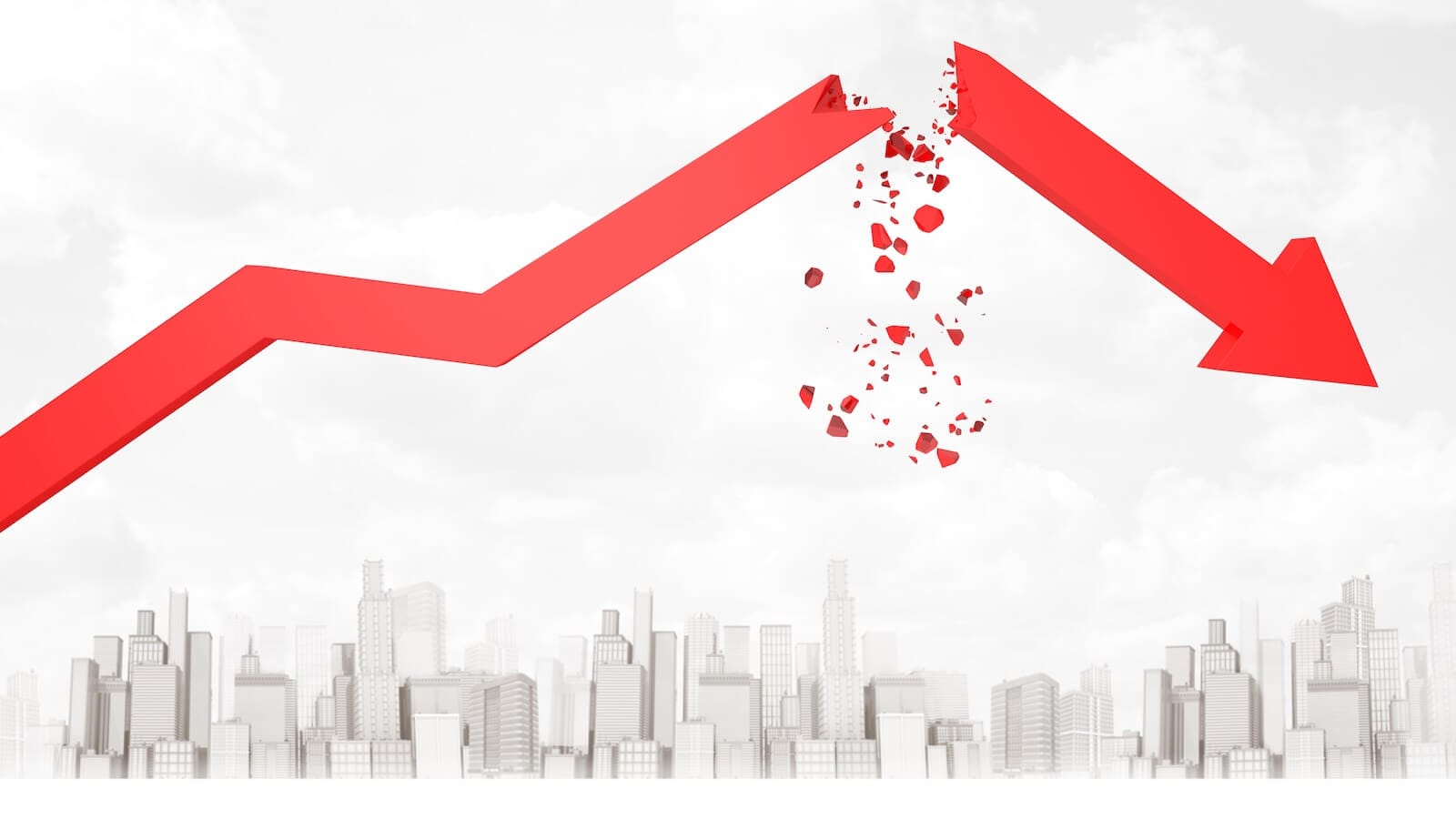BAD ECONOMIC NEWS IS LATE AS USUAL -- LOW PUT-CALL RATIO IS BEARISH WARNING -- SENTIMENT INDICATOR SHOWS IMPROVEMENT BUT NO UPTREND -- WHY I PREFER ETFS TO INDIVIDUAL STOCKS -- RAILS AND TRUCKERS WEIGH ON TRANSPORTS
ECONOMISTS ARE LATE AS USUAL... In a recent Market Message, I discussed how the stock market is a leading indicator of the economy and why it isn't a good idea to use economic forecasting to trade the stock market. Historically, the market turns down at least six months before the economy. Chart 1 shows the NYSE Advance-Decline Line peaking last June. That suggested a possible recession by December of last year. Chart 2 shows the S&P 500 peaking last October. That puts the odds for a recession somewhere around April of this year. This week's economic reports showed that second quarter growth was below economic forecasts. It probably would have been even worse without a temporary boost from rebate checks. More importantly, GDP growth for the fourth quarter of last year was actually negative. It was reported this morning that the unemployment rate for July rose from 5.5% to 5.7% to the highest level in more than four years. A number of economists were quoted over the last two days saying that the economy was now in recession. Thanks for that late newsflash nearly a year after the stock market started dropping. These are the same folks who accused investors of panicing at the end of last year by using the "fear versus fundamentals" slogan that was flashed on TV screens. With the stock market now in an offical bear market, what are investors supposed to do with the newfound pessimism in the economic community? How many times do we have to repeat this cycle before people realize that the only way to trade the stock market is to study the market itself -- not the economy. The study of the market is what the charting approach is all about. And what Stockcharts.com is all about.

Chart 1

Chart 2
CBOE PUT/CALL RATIO IS TOO LOW... One of our readers asked if the CBOE Options Put/Call Ratio was too low to support a market rally. The answer would seem to be yes. Chart 3 compares the CPC (red line) to the NYSE Composite Index (green line) for the last six months. The chart shows that market rallies usually start with a CPC reading at 1.20 or higher. Market drops usually start with a CPC reading at .85 or lower. Chart 3 shows the CPC trading at that lower level over the last two weeks. That low put/call reading would seem to favor lower stock values.

Chart 3
SENTIMENT READINGS ARE STILL BEARISH ... Another reader asked if the positive divergence between the major market indexes and some of our long-term sentiment indicators was a sign of a market bottom. To help answer that question, I'm plotting the Percent of NYSE Stocks Above 200-day Averages (NYA200R) in Chart 4. It's true that the sentiment indicator is in very oversold territory below 30 and is holding above its early 2008 lows. That's a good sign. The problem is that the indicator is still in bear market territory. In order to signal the start of a new bull market, the indicator would have to clear its spring high just over 50. It's nowhere close to doing that. That picture pretty much sums up the situation in our other sentiment indicators. Some slight improvement divergence-wise, but no real sign of a new uptrend.

Chart 4
WHY I PREFER ETFS TO STOCKS ... I'm often asked why I show so many Exchange Traded Funds and so few individual stocks. Here's why. We've been tracking the uptrend in the biotech group that started a month ago. We showed two ETFs that track the biotech group and explained as we usually do that ETFs are the simplest way to participate in a rally. I also showed a number of biotech leaders which included Amgen, Celgene, and Genetech. Last week, however, I showed Biogen Idec which had risen to a seven month high. In today's trading, however, the stock plunged 26% on very heavy volume (Chart 5). By contast, Biotech iShares (Chart 7) are down less than 1%. In sector and industry group trading, the toughest job is to find a market group that's starting to rally. Once you've done that, there's no real need to look much further. All you need to do is buy an ETF (or sector mutual fund) that tracks that group. If you're a stock picker, you have the additional task of finding the right stocks in the group. Although that's not all that difficult, you run the risk of holding a stock like BIIB which encounters some bad news. In other words, you could be in the right group but the wrong stock. ETFs eliminate that additional risk. That's why I prefer ETFs to individual stocks.

Chart 5

Chart 6
PERCENTAGE RETRACMENT RESISTANCE ... After all is said and done, the best way I know how to measure the trend of a market is to look at a chart. We do that to determine if anything as changed. As of right now, nothing has. Fibonacci lines are a valuable tool in determining if a market bounce is within normal boundaries. So far, they are. Chart 7 measures the last downleg from the mid-May peak to the mid-July bottom for the S&P 500. The modest bounce reached the lowest line which is a 38% retracment of the downleg. That's a minimum expectation and is well within the boundaries of a bear market bounce. Chart 8 shows the Nasdaq Composite regaining 50% of its recent decline. That's also pretty normal action. Odds now appear to favor a retest of the July lows.

Chart 7

Chart 8
TRANSPORTS WEAKEN ... The Dow Transports were one of Friday's weakest groups. Chart 9 shows the TRAN failing two tests of its 50-day average (blue line) over the last two weeks. More importantly, Chart 10 shows that the May rally in the transports failed a test of its June 2007 peak. That's important because transportation stocks have been market leaders since the start of the year. Chart 10 shows that most of this week's selling has been in trucking stocks. Rails have been the strongest transportation group. Chart 11, however, shows the Dow Jones US Railroad Index backing off from its June peak. Airline stocks, which have been rallying on oil weakness, actually held up best of all.

Chart 9

Chart 10

Chart 11
FOREIGN STOCKS ARE FALLING EVEN HARDER ... Up until a couple of months ago, an argument could have been made that foreign markets were holding up better than the U.S. That's no longer the case. Chart 12 shows EAFE iShares trading dangerously close to their 2008 lows with no bottom in sight. [EAFE stands for Europe Australasia and Far East]. The EFA is still trading well below its moving average lines and its first quarter lows. The relative strength line below Chart 12 plots a ratio of the EFA divided by the S&P 500. After holding up okay through the first five months of the year, the EFA/SPX ratio has started to drop. That means that foreign markets are now dropping faster than in the US. In other words, we're in a global bear market with nowhere to hide.

Chart 12










